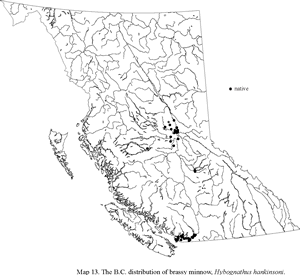This is a small, plain fish, with a snout that slightly overhangs the lower jaw: the dorsal fin originates in front of the pelvic fin, the mouth is small and the scales are large (37-40 along the lateral line). It lacks maxillary barbels. For further information, refer to McPhail (2008).
Source: McPail, J. D. 2008. The Freshwater Fishes of British Columbia. University of Alberta Press, Edmonton.
